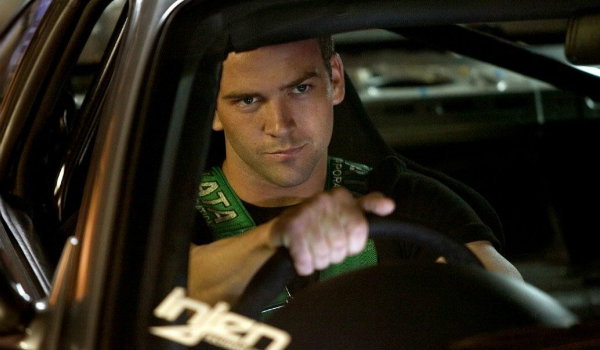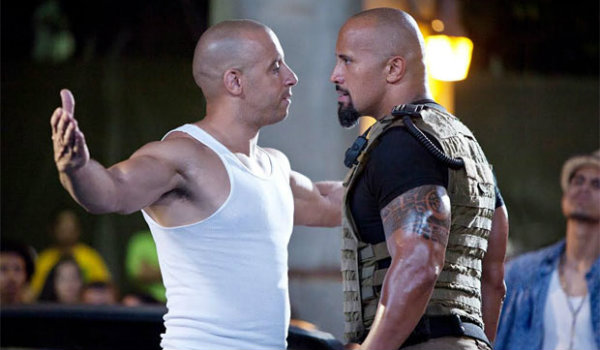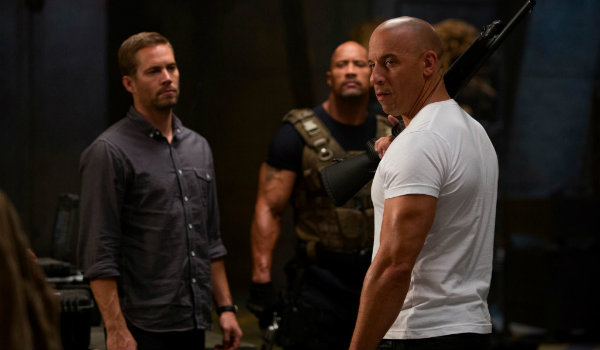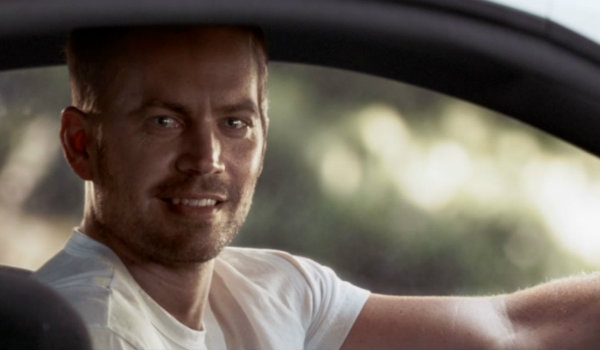7 Times The Fast And Furious Franchise Changed In A Fundamental Way

One of the most iconic thought experiments of all time is the concept of the Ship of Theseus. The paradox has gone through numerous changes over the years, but its core idea is predicated on one simple question: if a ship's crew gradually swaps out parts as the vessel docks in various ports, is it still the same ship by the time every component has been replaced? It's a concept with no definitive answers, and in the realm of film, no franchise epitomizes the Theseus Paradox more than the Fast and Furious franchise.
With each passing installment, the Fast and Furious series has slowly but surely moved away from the roots established in Rob Cohen's The Fast and the Furious, and the newly released Fate of the Furious has stretched the concept of the series farther than ever before. With that in mind, let's take a look back and examine how each of the Fast and Furious movies has changed the series in a fundamental way. This tradition dates all the way back to the second installment in the series, so let's get started with what happened once Vin Diesel decided to leave.

2 Fast 2 Furious - Introducing Roman Pearce And Tej Parker
Going into its second installment, the Fast and Furious franchise went through a notable identity crisis as it tried to figure itself out. With 2 Fast 2 Furious, the franchise dropped its biggest star as Vin Diesel opted to focus on the xXx and Riddick franchises -- which seems genuinely bizarre in hindsight. To compensate for Diesel's departure, the sequel to The Fast and the Furious shifted gears from Los Angeles to Miami and teamed Paul Walker's Brian O'Conner up with Tyrese Gibson's Roman Pearce. Aside from the title, most people tend to forget about 2 Fast 2 Furious, and the addition of Roman and Tej (Ludacris) to the series mythology is the only other significant development.

Tokyo Drift - Establishing The World Beyond Brian And Dom
In recent years, Fast & Furious: Tokyo Drift has become far more important to the overarching Fast and Furious mythology than we ever realized. Although it initially felt like little more than a cheap knockoff of the original formula, Tokyo Drift effectively gave the Fast and Furious franchise the cinematic universe treatment before Marvel made the idea a standard Hollywood trope. The introduction of Han and Lucas Black helped establish the concept that the Fast and Furious films didn't need to focus on Brian and Dom. Beyond that, the inclusion of Vin Diesel's cameo at the very end of the movie hammered home the idea that the story could move away from its two original heroes while still acknowledging that they exist in this universe.

Fast And Furious - Making Brian O'Conner An Outlaw
As a bridge between the old and the new, 2009's Fast and Furious provided a soft reboot and helped pave the way for what the franchise would become in its later installments. Although it is often considered the worst entry in the entire Fast and Furious franchise, the fourth film in the series did one critical thing that would guide the franchise for years to come: it finally put Dom and Brian O'Conner on the same side of the law. Rather than continue to retread the tried and true Point Break-esque dynamic, Fast and Furious concluded with Brian finally embracing Dom as his brother and joining the "family" as a full-time member for their future heists and adventures.

Fast Five - Introducing Hobbs / Embracing The Heist Format
Justin Lin's Fast Five is widely considered the best film in the entire Fast and Furious franchise, and much of that has to do with the substantial changes that the director made to the formula coming off the tail end of the series' weakest installment. Two critical things happened in Fast Five: the series introduced "franchise viagra" Dwayne Johnson into the equation as Luke Hobbs, and it also completely embraced the Ocean's Eleven-style heist premise in a way that previous entries in the series had not. The concept of using cars to pull off major thefts dates back to the first film in the franchise, but Fast Five doubled down on the ridiculousness and catapulted the series to blockbuster status.

Fast And Furious 6 - Making The Crew Government Employees
On the surface, Fast and Furious 6 shares much of the same DNA that made Fast Five so successful -- which is obviously why it's considered one of the better installments in the series. However, the biggest change made by the sixth installment in the series is the fact that it moved Dominic Toretto and his crew away from their previously held statuses as international criminals. Instead of running from the law on this adventure, Fast and Furious 6 saw the team hired by the United States government as mercenaries in their mission to capture Luke Evans' Owen Shaw. This removed the traditional "outlaw" element from the series but added a new dimension of international adventure that had previously been missing.
Your Daily Blend of Entertainment News

Furious 7 - Retiring Brian O'Conner
Unquestionably the most emotional entry in the entire Fast and Furious mythology, Furious 7 stands out for the simple fact that it was Paul Walker's last movie in the franchise. James Wan had an enormous task ahead of him when the face of the series died in a horrific car crash back in 2013, but Furious 7 gracefully retired Brian O'Conner in an incredibly respectful way, while also using his exit to make a statement about the nature of the franchise. By necessity, Furious 7 needed to feel like more of an ensemble-oriented film than any other entry in the series, so the prudent use of Brian O'Conner (coupled with his graceful retirement) helped prove that Fast and Furious is bigger than any one character.

The Fate of the Furious - Embracing The Spy Genre
Last but not least we come to the latest installment in the Fast and Furious franchise with F. Gary Gray's The Fate of the Furious. Although the most recent entry in the series certainly maintains much of the heist DNA that made the last three Fast and Furious movies so successful, Fate doubles down on the espionage elements and adds a much stronger sense of international intrigue to the series. With this eighth film in the long-running franchise, the Fast and Furious movies are officially no longer about a group of highly skilled criminals pulling off insane heists. Instead, we have now moved into the realm of potentially apocalyptic doomsday scenarios, and James Bond-esque missions to save the world.
What do you think of the current direction of the Fast and Furious franchise? Give us your thoughts in the comments to keep this conversation going! The Fate of the Furious is currently in theaters, so make sure to check it out!
Originally from Connecticut, Conner grew up in San Diego and graduated from Chapman University in 2014. He now lives in Los Angeles working in and around the entertainment industry and can mostly be found binging horror movies and chugging coffee.

